-
 Bitcoin
Bitcoin $83,581.5964
-1.31% -
 Ethereum
Ethereum $1,827.0061
-2.95% -
 Tether USDt
Tether USDt $0.9998
0.00% -
 XRP
XRP $2.0572
-2.12% -
 BNB
BNB $600.6352
-0.50% -
 Solana
Solana $120.4741
-3.43% -
 USDC
USDC $0.9998
0.00% -
 Dogecoin
Dogecoin $0.1664
-3.04% -
 Cardano
Cardano $0.6531
-2.78% -
 TRON
TRON $0.2370
-0.47% -
 Toncoin
Toncoin $3.7850
-5.03% -
 Chainlink
Chainlink $13.2476
-3.86% -
 UNUS SED LEO
UNUS SED LEO $9.3960
-0.18% -
 Stellar
Stellar $0.2662
-1.01% -
 Sui
Sui $2.4099
1.77% -
 Avalanche
Avalanche $18.7876
-2.88% -
 Shiba Inu
Shiba Inu $0.0...01237
-0.55% -
 Hedera
Hedera $0.1663
-0.15% -
 Polkadot
Polkadot $4.0579
-1.23% -
 Litecoin
Litecoin $83.8022
0.76% -
 MANTRA
MANTRA $6.3807
2.55% -
 Bitcoin Cash
Bitcoin Cash $304.1581
-0.61% -
 Bitget Token
Bitget Token $4.5514
-1.22% -
 Dai
Dai $1.0000
0.01% -
 Ethena USDe
Ethena USDe $0.9999
0.00% -
 Pi
Pi $0.6648
-3.97% -
 Hyperliquid
Hyperliquid $12.4497
-5.55% -
 Monero
Monero $214.6449
-2.17% -
 Uniswap
Uniswap $6.0261
-2.31% -
 Aptos
Aptos $5.2625
-0.45%
What Is Impermanent Loss?
To identify impermanent loss, compare the value of your deposited assets before and after providing liquidity; a decrease indicates unrealized loss.
Dec 17, 2024 at 02:27 pm
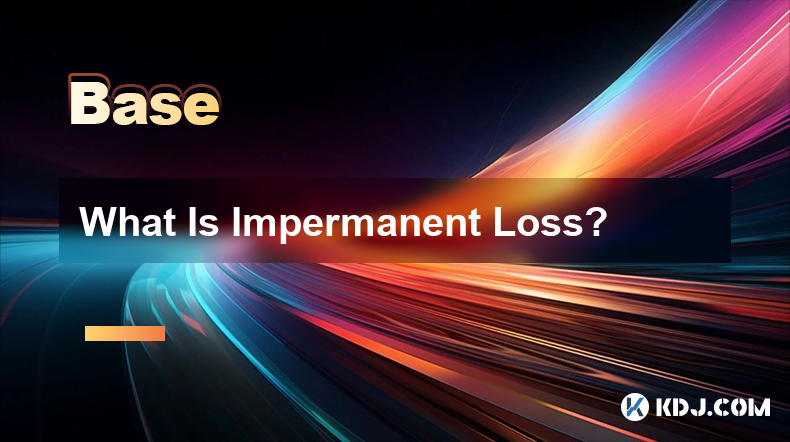
Key Points:
- Definition and Mechanisms of Impermanent Loss
- Identifying and Calculating Impermanent Loss
- Strategies for Minimizing Impermanent Loss
- Examples of Impermanent Loss in Practice
- Risk Management Considerations for Liquidity Providers
- Benefits of Understanding Impermanent Loss
What Is Impermanent Loss?
Impermanent loss is a temporary unrealized loss that liquidity providers (LPs) in automated market makers (AMMs) may experience when the prices of the underlying assets change significantly. It occurs when the value of the LPs' deposited assets changes disproportionately, leading to a decrease in the overall value of their position. Impermanent loss is considered "impermanent" because it can be reversed if the asset prices return to their original values.
Identifying and Calculating Impermanent Loss
To identify impermanent loss, compare the value of the LPs' deposited assets before and after providing liquidity to the AMM. If the total value of the assets has decreased, impermanent loss has occurred.
Calculating impermanent loss involves comparing the value of the LPs' position in the AMM to the value of the same assets held outside of the AMM. The formula for calculating impermanent loss is:
Impermanent Loss = (Value of LPs' position in AMM - Value of same assets outside AMM) / Value of same assets outside AMMStrategies for Minimizing Impermanent Loss
- Provide liquidity to stablecoin pools: Stablecoin pools have lower price volatility, reducing the risk of large price swings.
- Choose pools with similar risk profiles: Select liquidity pools comprised of assets with correlated price movements to minimize divergence and impermanent loss.
- Deposit a balanced allocation of assets: Maintain a close to 50-50 ratio of deposited assets to mitigate the impact of price fluctuations.
- Monitor price movements: Stay informed about the price performance of the underlying assets and adjust your strategy accordingly.
- Provide liquidity for longer periods: Extended time horizons allow for potential recovery from impermanent losses as asset prices fluctuate.
Examples of Impermanent Loss in Practice
- Scenario 1: Assume an LP deposits $1,000 worth of ETH and $1,000 worth of DAI in an ETH/DAI pool. If the price of ETH rises to $1,200 and the price of DAI remains stable, the LP would experience impermanent loss.
- Scenario 2: An LP provides liquidity to a BTC/USDT pool with $500 worth of BTC and $500 worth of USDT. If the price of BTC falls to $400 while the price of USDT remains constant, the LP would suffer impermanent loss.
Risk Management Considerations for Liquidity Providers
- Thorough research: Understand the assets being traded and their historical price movements to assess potential risks.
- Conservative deposits: Consider depositing only a portion of your portfolio to limit potential losses.
- Diversification: Spread investments across multiple assets and consider using stablecoin pools to mitigate price volatility.
- Risk tolerance assessment: Determine your comfort level with impermanent loss and adjust your strategy accordingly.
- Understanding AMM dynamics: Recognize that impermanent loss is inherent in the functioning of AMMs.
Benefits of Understanding Impermanent Loss
- Informed decision-making: Knowing about impermanent loss allows LPs to make informed decisions about providing liquidity.
- Proactive mitigation strategies: Understanding the mechanisms of impermanent loss empowers LPs to develop strategies to minimize its impact.
- Improved risk management: By considering impermanent loss in risk management, LPs can protect their portfolio and minimize potential losses.
- Realistic expectations: Recognizing the potential for impermanent loss sets realistic expectations for LPs and helps them avoid unrealistic assumptions about returns.
FAQs
Q: Why do different liquidity pools have different levels of impermanent loss?
A: The level of impermanent loss varies depending on the price volatility of the underlying assets. Pools with stable assets tend to have lower impermanent loss, while pools with volatile assets exhibit higher levels of impermanent loss.
Q: When is impermanent loss realized?
A: Impermanent loss is realized when the LP withdraws their assets from the liquidity pool. If the prices of the underlying assets have changed significantly from the time the assets were deposited, the LP may experience impermanent loss or gain.
Q: Is there any way to permanently avoid impermanent loss?
A: No, impermanent loss is an inherent characteristic of liquidity pools in AMMs. However, by understanding the mechanisms and implementing risk management strategies, LPs can minimize the potential impact of impermanent loss.
Disclaimer:info@kdj.com
The information provided is not trading advice. kdj.com does not assume any responsibility for any investments made based on the information provided in this article. Cryptocurrencies are highly volatile and it is highly recommended that you invest with caution after thorough research!
If you believe that the content used on this website infringes your copyright, please contact us immediately (info@kdj.com) and we will delete it promptly.
- Looking Past the Plateau: Where the Momentum Is Now
- 2025-04-03 12:15:13
- Coincodex's machine learning algorithm predicts Dogecoin (DOGE) price surge to $0.57
- 2025-04-03 12:15:13
- Pi Network (PI) Price Drops 20% as Investors Call for Leadership Changes
- 2025-04-03 12:10:13
- BlockDAG's Beta Testnet Ignites Real Adoption While ADA Eyes $0.85 and Ripple Slashes SEC Fine
- 2025-04-03 12:10:12
- Meme-powered tokens like Official Trump and Bonk have lost their steam
- 2025-04-03 12:05:13
- VanEck Launches a New Financial Product Tied to Celestia's (TIA) Blockchain
- 2025-04-03 12:05:13
Related knowledge
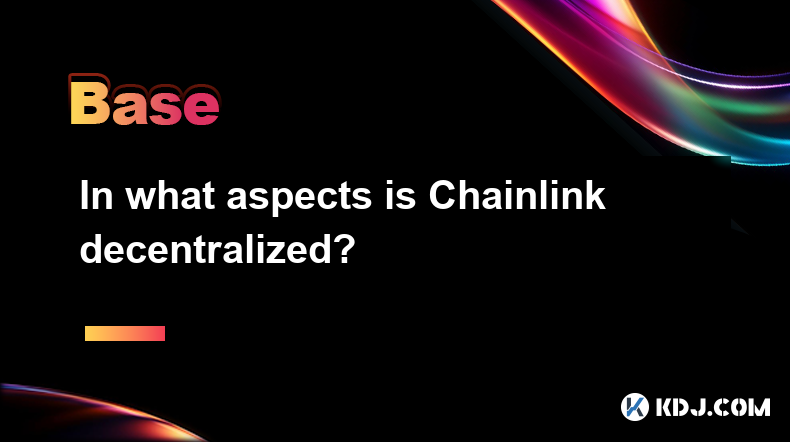
In what aspects is Chainlink decentralized?
Apr 02,2025 at 05:49pm
Chainlink is a decentralized oracle network that plays a crucial role in connecting smart contracts on blockchain networks with real-world data. Its decentralization is reflected in multiple aspects, ensuring the network's security, reliability, and integrity. This article delves into the various ways Chainlink achieves decentralization, including its n...

How does Chainlink connect smart contracts with real-world data?
Apr 02,2025 at 03:56pm
Chainlink is a decentralized oracle network that plays a crucial role in connecting smart contracts on blockchain platforms with real-world data. Smart contracts are self-executing contracts with the terms of the agreement directly written into code, but they can only interact with on-chain data. To access real-world data, such as stock prices, weather ...
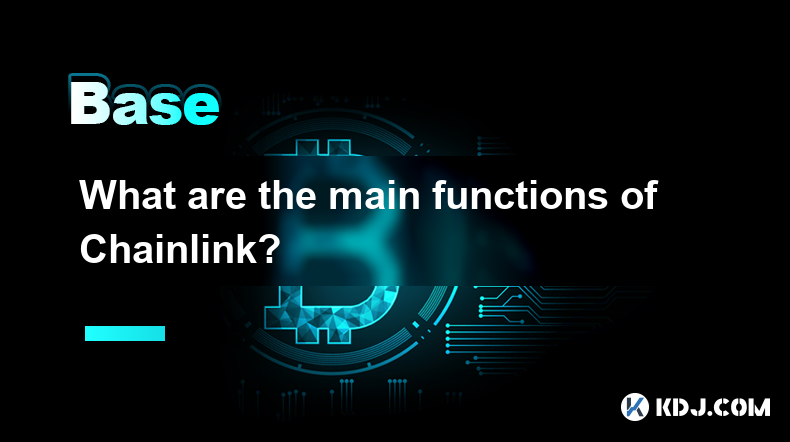
What are the main functions of Chainlink?
Apr 02,2025 at 11:49pm
Chainlink is a decentralized oracle network that plays a crucial role in connecting smart contracts with real-world data and external APIs. The primary function of Chainlink is to facilitate the seamless integration of off-chain data into on-chain smart contracts, enabling them to execute based on real-world events and information. This integration is v...

How does Chainlink work?
Apr 03,2025 at 01:50am
Chainlink is a decentralized oracle network that connects smart contracts with real-world data and external APIs. It plays a crucial role in the blockchain ecosystem by enabling smart contracts to interact with data outside their native blockchain environment. This connectivity is essential for smart contracts to execute based on real-world events and d...
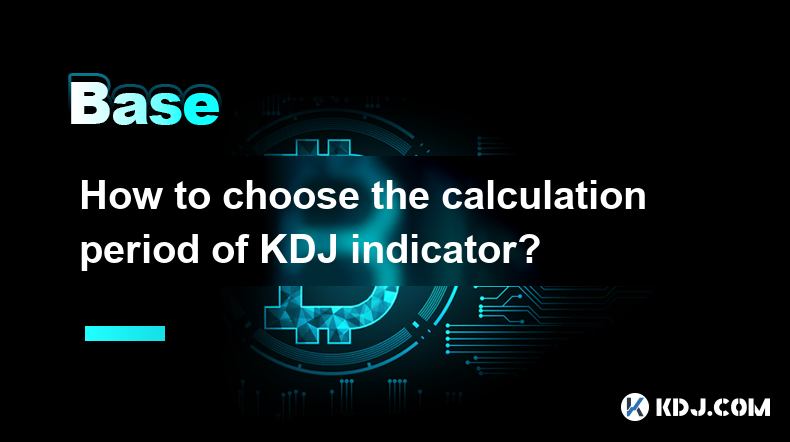
How to choose the calculation period of KDJ indicator?
Apr 02,2025 at 01:00pm
The KDJ indicator, also known as the Stochastic Oscillator, is a popular technical analysis tool used by cryptocurrency traders to identify potential buy and sell signals. The calculation period of the KDJ indicator is crucial in determining its effectiveness in predicting market trends. In this article, we will explore the factors to consider when choo...
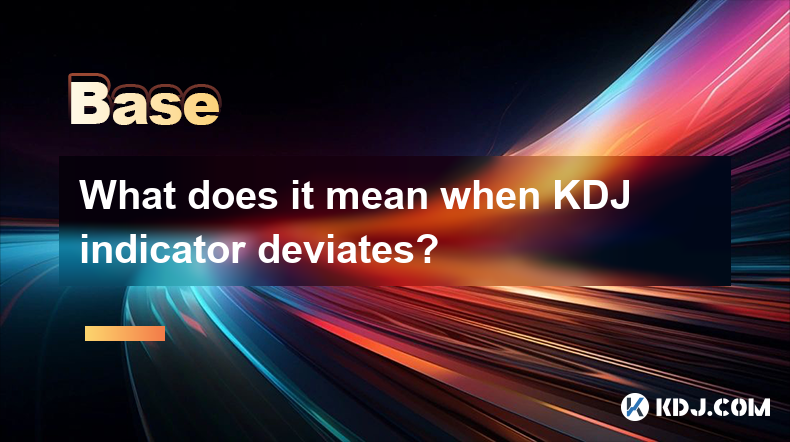
What does it mean when KDJ indicator deviates?
Apr 01,2025 at 03:08pm
The KDJ indicator, also known as the Stochastic Oscillator, is a popular technical analysis tool used in the cryptocurrency market to predict price movements. When the KDJ indicator deviates, it means that the current price of a cryptocurrency is moving away from its typical range, as indicated by the KDJ lines. This deviation can signal potential trend...

In what aspects is Chainlink decentralized?
Apr 02,2025 at 05:49pm
Chainlink is a decentralized oracle network that plays a crucial role in connecting smart contracts on blockchain networks with real-world data. Its decentralization is reflected in multiple aspects, ensuring the network's security, reliability, and integrity. This article delves into the various ways Chainlink achieves decentralization, including its n...

How does Chainlink connect smart contracts with real-world data?
Apr 02,2025 at 03:56pm
Chainlink is a decentralized oracle network that plays a crucial role in connecting smart contracts on blockchain platforms with real-world data. Smart contracts are self-executing contracts with the terms of the agreement directly written into code, but they can only interact with on-chain data. To access real-world data, such as stock prices, weather ...

What are the main functions of Chainlink?
Apr 02,2025 at 11:49pm
Chainlink is a decentralized oracle network that plays a crucial role in connecting smart contracts with real-world data and external APIs. The primary function of Chainlink is to facilitate the seamless integration of off-chain data into on-chain smart contracts, enabling them to execute based on real-world events and information. This integration is v...

How does Chainlink work?
Apr 03,2025 at 01:50am
Chainlink is a decentralized oracle network that connects smart contracts with real-world data and external APIs. It plays a crucial role in the blockchain ecosystem by enabling smart contracts to interact with data outside their native blockchain environment. This connectivity is essential for smart contracts to execute based on real-world events and d...

How to choose the calculation period of KDJ indicator?
Apr 02,2025 at 01:00pm
The KDJ indicator, also known as the Stochastic Oscillator, is a popular technical analysis tool used by cryptocurrency traders to identify potential buy and sell signals. The calculation period of the KDJ indicator is crucial in determining its effectiveness in predicting market trends. In this article, we will explore the factors to consider when choo...

What does it mean when KDJ indicator deviates?
Apr 01,2025 at 03:08pm
The KDJ indicator, also known as the Stochastic Oscillator, is a popular technical analysis tool used in the cryptocurrency market to predict price movements. When the KDJ indicator deviates, it means that the current price of a cryptocurrency is moving away from its typical range, as indicated by the KDJ lines. This deviation can signal potential trend...
See all articles
























































































